Andrew Hou
COMPOSE: Comprehensive Portrait Shadow Editing
Aug 25, 2024



Abstract:Existing portrait relighting methods struggle with precise control over facial shadows, particularly when faced with challenges such as handling hard shadows from directional light sources or adjusting shadows while remaining in harmony with existing lighting conditions. In many situations, completely altering input lighting is undesirable for portrait retouching applications: one may want to preserve some authenticity in the captured environment. Existing shadow editing methods typically restrict their application to just the facial region and often offer limited lighting control options, such as shadow softening or rotation. In this paper, we introduce COMPOSE: a novel shadow editing pipeline for human portraits, offering precise control over shadow attributes such as shape, intensity, and position, all while preserving the original environmental illumination of the portrait. This level of disentanglement and controllability is obtained thanks to a novel decomposition of the environment map representation into ambient light and an editable gaussian dominant light source. COMPOSE is a four-stage pipeline that consists of light estimation and editing, light diffusion, shadow synthesis, and finally shadow editing. We define facial shadows as the result of a dominant light source, encoded using our novel gaussian environment map representation. Utilizing an OLAT dataset, we have trained models to: (1) predict this light source representation from images, and (2) generate realistic shadows using this representation. We also demonstrate comprehensive and intuitive shadow editing with our pipeline. Through extensive quantitative and qualitative evaluations, we have demonstrated the robust capability of our system in shadow editing.
INFAMOUS-NeRF: ImproviNg FAce MOdeling Using Semantically-Aligned Hypernetworks with Neural Radiance Fields
Dec 23, 2023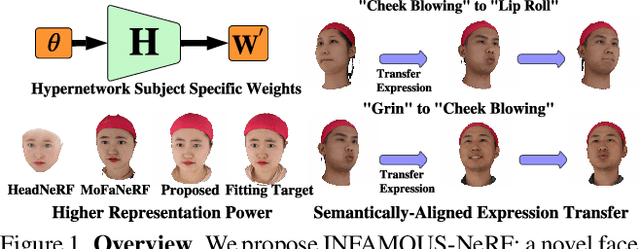
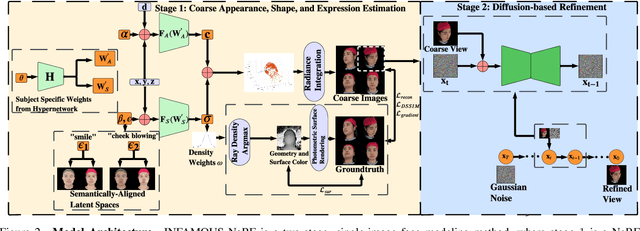

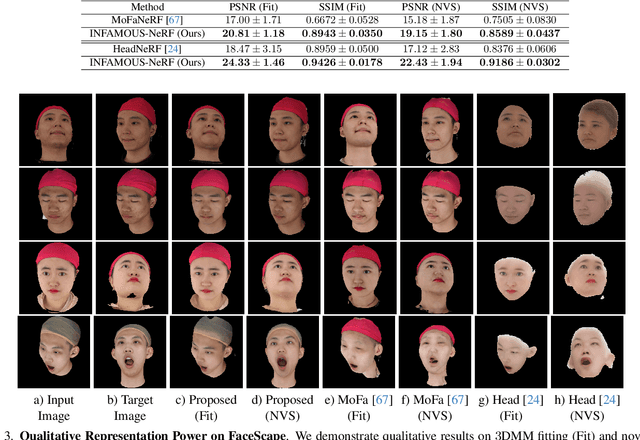
Abstract:We propose INFAMOUS-NeRF, an implicit morphable face model that introduces hypernetworks to NeRF to improve the representation power in the presence of many training subjects. At the same time, INFAMOUS-NeRF resolves the classic hypernetwork tradeoff of representation power and editability by learning semantically-aligned latent spaces despite the subject-specific models, all without requiring a large pretrained model. INFAMOUS-NeRF further introduces a novel constraint to improve NeRF rendering along the face boundary. Our constraint can leverage photometric surface rendering and multi-view supervision to guide surface color prediction and improve rendering near the surface. Finally, we introduce a novel, loss-guided adaptive sampling method for more effective NeRF training by reducing the sampling redundancy. We show quantitatively and qualitatively that our method achieves higher representation power than prior face modeling methods in both controlled and in-the-wild settings. Code and models will be released upon publication.
Face Relighting with Geometrically Consistent Shadows
Mar 30, 2022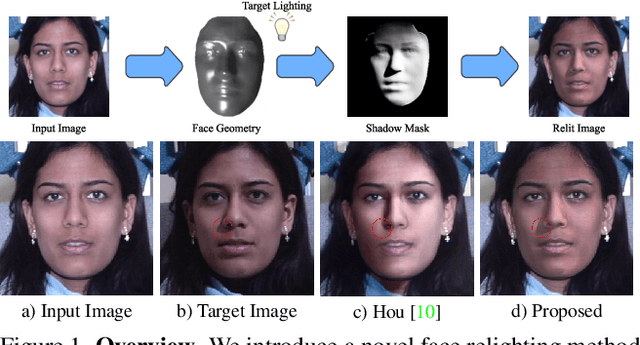
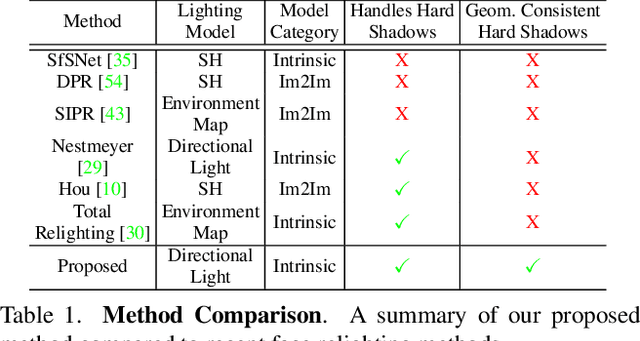
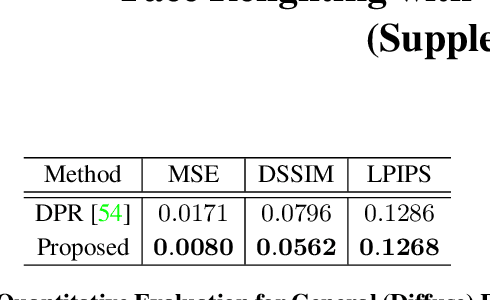
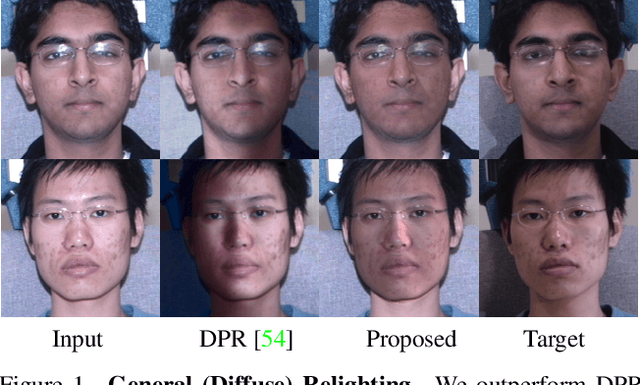
Abstract:Most face relighting methods are able to handle diffuse shadows, but struggle to handle hard shadows, such as those cast by the nose. Methods that propose techniques for handling hard shadows often do not produce geometrically consistent shadows since they do not directly leverage the estimated face geometry while synthesizing them. We propose a novel differentiable algorithm for synthesizing hard shadows based on ray tracing, which we incorporate into training our face relighting model. Our proposed algorithm directly utilizes the estimated face geometry to synthesize geometrically consistent hard shadows. We demonstrate through quantitative and qualitative experiments on Multi-PIE and FFHQ that our method produces more geometrically consistent shadows than previous face relighting methods while also achieving state-of-the-art face relighting performance under directional lighting. In addition, we demonstrate that our differentiable hard shadow modeling improves the quality of the estimated face geometry over diffuse shading models.
Towards High Fidelity Face Relighting with Realistic Shadows
Apr 02, 2021

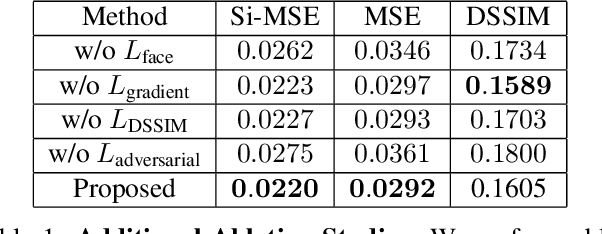

Abstract:Existing face relighting methods often struggle with two problems: maintaining the local facial details of the subject and accurately removing and synthesizing shadows in the relit image, especially hard shadows. We propose a novel deep face relighting method that addresses both problems. Our method learns to predict the ratio (quotient) image between a source image and the target image with the desired lighting, allowing us to relight the image while maintaining the local facial details. During training, our model also learns to accurately modify shadows by using estimated shadow masks to emphasize on the high-contrast shadow borders. Furthermore, we introduce a method to use the shadow mask to estimate the ambient light intensity in an image, and are thus able to leverage multiple datasets during training with different global lighting intensities. With quantitative and qualitative evaluations on the Multi-PIE and FFHQ datasets, we demonstrate that our proposed method faithfully maintains the local facial details of the subject and can accurately handle hard shadows while achieving state-of-the-art face relighting performance.
 Add to Chrome
Add to Chrome Add to Firefox
Add to Firefox Add to Edge
Add to Edge